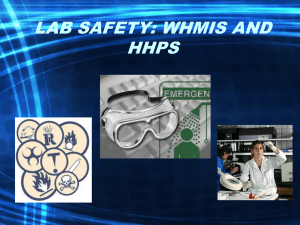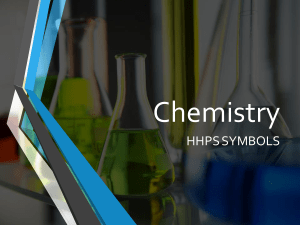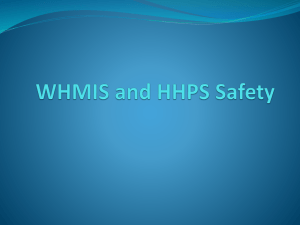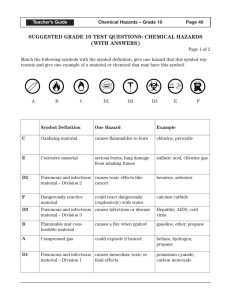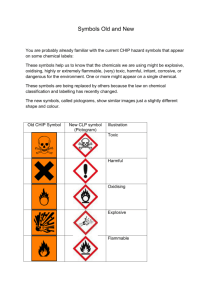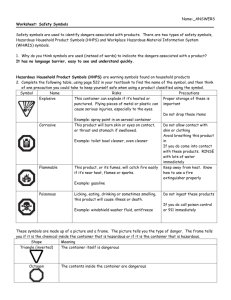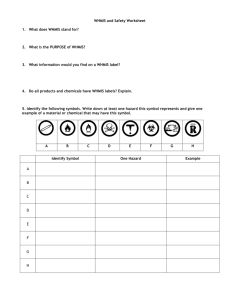SAFETY SYMBOLS: HHPS HHPS - stands for Hazardous
advertisement
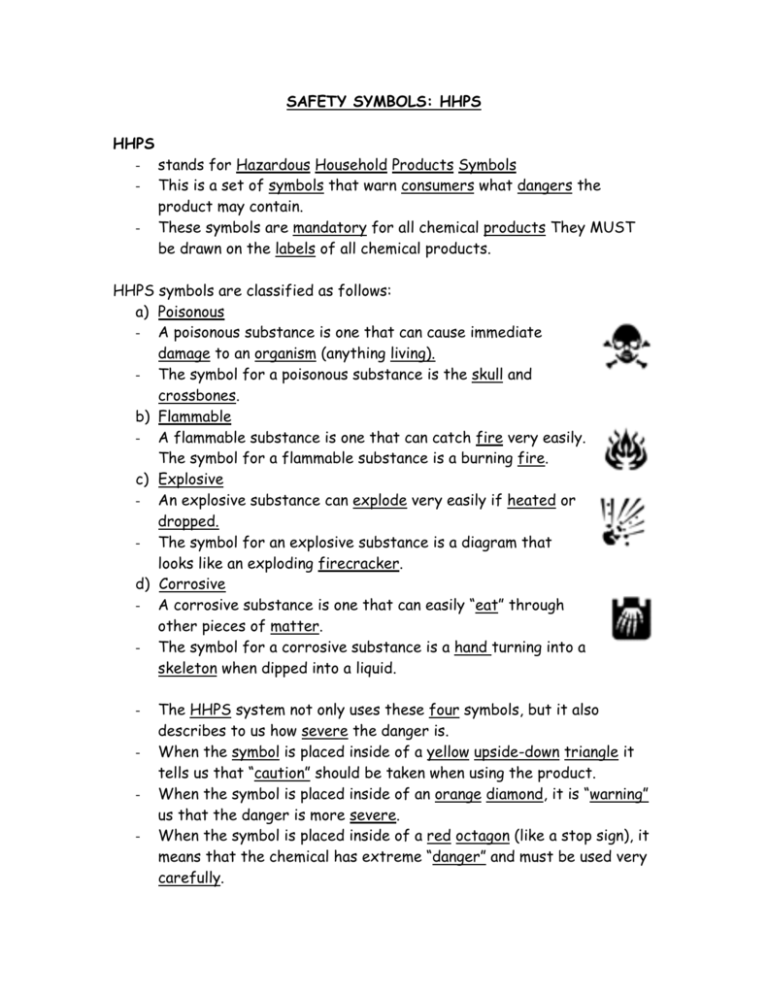
SAFETY SYMBOLS: HHPS HHPS - stands for Hazardous Household Products Symbols - This is a set of symbols that warn consumers what dangers the product may contain. - These symbols are mandatory for all chemical products They MUST be drawn on the labels of all chemical products. HHPS symbols are classified as follows: a) Poisonous - A poisonous substance is one that can cause immediate damage to an organism (anything living). - The symbol for a poisonous substance is the skull and crossbones. b) Flammable - A flammable substance is one that can catch fire very easily. The symbol for a flammable substance is a burning fire. c) Explosive - An explosive substance can explode very easily if heated or dropped. - The symbol for an explosive substance is a diagram that looks like an exploding firecracker. d) Corrosive - A corrosive substance is one that can easily “eat” through other pieces of matter. - The symbol for a corrosive substance is a hand turning into a skeleton when dipped into a liquid. - The HHPS system not only uses these four symbols, but it also describes to us how severe the danger is. When the symbol is placed inside of a yellow upside-down triangle it tells us that “caution” should be taken when using the product. When the symbol is placed inside of an orange diamond, it is “warning” us that the danger is more severe. When the symbol is placed inside of a red octagon (like a stop sign), it means that the chemical has extreme “danger” and must be used very carefully. - Let’s identify the following risks: This substance is mildly corrosive. It may burn through paper or irritate skin.___________________________________ _______________________________________________ This substance is extremely poisonous. This may kill an_____ organism._______________________________________ _______________________________________________ This substance may ignite (set on fire).__________________ _______________________________________________ _______________________________________________ APPLICATION OF HHPS: Examine 3 household products. For each product, perform the following steps and record your observations. a) Name the product. b) Name the manufacturer (the company that makes it). c) Describe what kinds of warning symbols (HHPS) are on the product. d) Use the label to record what safety precautions you should use when using the product. e) Use the label to record what the manufacturer suggests you do if the product harms you. SAFETY SYMBOLS: WHMIS WHMIS - stands for the “Workplace Hazardous Materials Information System.” - Similar to HHPS, WHMIS also uses safety symbols to let users know what dangers the chemical may possess. There are 8 WHMIS symbols: a) Compressed Gas – this means that gas is under very high pressure inside of its container and therefore may explode easily. b) Flammable and Combustible – same meaning as in the HHPS category. c) Oxidizing Material – this product will contain highly reactive oxygen (more dangerous than the oxygen we breathe). d) Corrosive Material – same meaning as in the combine category. e) Dangerously Reactive Material – this substance will combine with almost any chemical around it and therefore cause a potentially dangerous reaction. f) Biohazardous Infectious Material – this substance came from an organism and may contain bacteria or viruses. g) Poisonous and Infectious Material – this substance is very toxic and may be fatal (cause death). h) Poisonous and Infectious Material – this is a less severe (mildly) than the category above. The substance still may cause severe effects such as blindness or brain damage.
